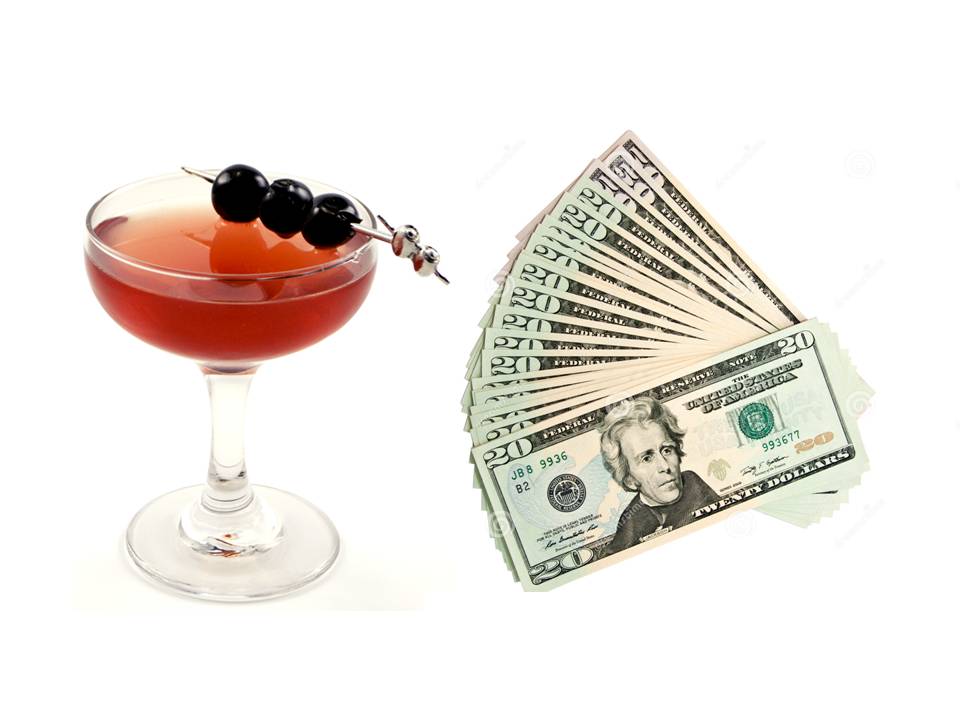As a beverage consultant, I am frequently asked to design craft cocktail lists for high volume establishments. Every day I am approached by major corporations and smaller restaurateurs/bar owners who want to remain competitive in the mist of the global cocktail revolution. The biggest myth in the industry is that great craft cocktails take longer to make than the classics. For high volume restaurants, bars and resorts the prevailing perception is that you must sacrifice quality in order to maintain quantity. However, there is a financially viable solution. When properly executed, even the busiest restaurants can keep up with demand while delivering fantastic tasting quality craft cocktails every single time.
The key is to successfully execute a two part program which may initially sound obvious, but very few bars in my experience actually take the time to implement each part properly and therefore fail at both. The first part of the program is Mise en place (meaning- putting in place). Mise en place is simply making sure that you have all of the glassware, ingredients, garnishes, and bar tools set up in a logical, ergonomic fashion so that they are easily accessible when you need to quickly assemble recipes specifically from your cocktail list. This requires some forethought and planning on behalf of the bar staff and management. A lot of the higher-end craft cocktail lounges use cheater bottles on their bar filled with syrups, tonics and tinctures, but also base spirits and modifying spirits required to make every craft cocktail on their list. This way the bartender doesn’t have to constantly scramble throughout the shift to find this bottle or that ingredient.
The idea is to have everything you need to make every cocktail on your list within arm’s reach. This is not always possible depending on your bar layout, but time is money and spending the extra time to make sure the bar is set up for success can tip the scale in favor of profitability and happy consumers. If space permits, it is also a wise idea to have all the ingredients for the top ten most commonly ordered classics available at arm’s reach as well.
The other component of a successful high volume craft cocktail program, Pre-batching, is a little more controversial. The purest will scream that every component MUST be assembled in front of the guest in order to ensure that the integrity of each cocktail is at its freshest and optimal balance… and while I agree that this is ideal, if you pre-batch using the following rules, you can crank out craft cocktails all night long in a fast and efficient manner while still maintaining balance and quality standards for every cocktail served:
Pre-batching Boozy Drinks-If you have cocktails on your list that are entirely composed of multiple liquors and/or liqueurs, with no mixers (non-alcoholic components), there is nothing wrong with simply blending all the ingredients together in the proper proportions to make one huge balanced cocktail and then filling up an empty bottle(s) with that cocktail to use as needed. Of course, those cocktails will need to be chilled and diluted upon being ordered (many state laws prohibit serving alcohol unless poured from the original container, however this is rarely enforced and is on the books to keep unscrupulous bar owners from watering down booze or replacing the good stuff with poor quality distillates).
If you do decide to pre-batch multiple liquors, the bottle should be labeled and dated with the name of the cocktail so that the entire bar staff is on the same page. The advantage to pre-batching is that you can taste the drink for balance in advance and the bar staff doesn’t have to waste time grabbing multiple bottles and measuring each pour according to the recipe. The only downside is that the guests don’t get to see you pouring the individual brands required to make the drink. However, in a high volume restaurant with a back bar sending drinks to tables or serving to large parties/functions, this is not an issue.
Pre-batching Citrus Juices-The Italians say that fresh squeezed citrus is golden in the morning, silver in the afternoon and bronze in the evening. In other words, the longer your fresh juices are exposed to air, the more oxidized (and subsequently bitter) they become. While I am a die-hard proponent of freshly squeezed juices a-la-minute (on the spot) I advocate pre-squeezing fresh juices in volume to get through the busiest parts of the day while business is cranking. Citrus should never be added to the alcoholic components of the cocktail in advance.
Lemon, lime and grapefruit juices only keeps for one day at the most. Fresh orange and pineapple juice have enough residual sugars to keep for several days. If you end up with too much fresh juice being thrown out at the end of the night, cut back on your pars but DO throw it out (or give to the kitchen). It is important to anticipate business and then create pars, but note that a lazy barman will always order more juice than required, the solution for that is to have your bartenders squeezing all their own juices at the beginning of the day.
Ideally, by the end of the night when things slow down, the bartenders should have run out of the pre-squeezed juices and should be squeezing fresh juice per drink ordered. I tell my high volume clients to either pre-mix all the alcoholic components and squeeze fresh juice in front of the guest OR pre-mix the liquor in advance and then add pre-squeezed juice while preparing the drink. If you decide to go the later route, just remember the aforementioned Italian saying about citrus juices. Make sure to taste each cocktail for balance and don’t be surprised to find that you are adding a little bit more sugar syrup toward the end of the day than at the beginning to balance out oxidized juices.
Pre-batching Carbonation- Every new bartender learns the hard way to never shake carbonated drinks. It sounds obvious but almost every newbie has to get soaking wet at least once before the lesson sinks in. The same principle holds true for pre-batching carbonated drinks. Don’t do it. Common sense tells you that the drink will lose the bubbles throughout the day. Once you add carbonation you can no longer shake the cocktail which means you either have to stir or tumble roll to get the proper dilution. Carbonated ingredients are always added after the cocktail has been chilled and diluted. Only then add carbonation, tumble rolled once to mix the ingredient throughout, garnish and serve.
Pre-batching Mixers- There is a lot of mixed drinks that have non-alcoholic mixers added to them. Many of those mixers have a fizzy component to them (i.e. coke, sprite, club soda), in which case simply follow the rules for carbonated drinks above, however for all other mixers, specific rules apply. The biggest concern with pre-batching mixers with liquor in advance is if the non-alcoholic ingredient(s) are perishable or have an expiration date. Wine, vermouth, dry sherry and dairy products should only be added only at the time the drink is made. The same is true for cocktails requiring eggs or egg whites. For other drinks that have non-alcoholic ingredients that are not perishable (i.e. water, sugars, spices, etc.), these ingredients can be added to liquor(s) in advance and will keep indefinitely if stored properly. Herbs can also be added in advance for infusions but must be removed once the oils are extracted but before the mix becomes bitter.
The bottoms line is that craft cocktails are good for the bottom line. Pre-batching tends to get a bad rap, but when done properly can produce high quality and highly lucrative drinks. Of course, it’s always a good idea to hire a professional mixologist to create the menu and teach the staff how to properly execute. Once you’re are up and going, mis en place ensures speed and pre-batching guarantees consistency. The beauty of well made craft cocktails is that the bartender’s check averages go up, the house’s liquor costs go down and most importantly, the guest gets a better experience. Win, win, win!!

